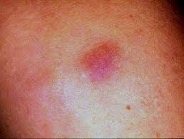Introduction
Chronic wounds characterized by delayed healing, pose a significant challenge. These wounds often result from various factors, such as underlying health conditions, impaired circulation, or persistent infections. Recognizing the root cause is crucial for effective management and positive patient outcomes.
Retained foreign bodies represent a less common but impactful contributor to chronic wound complications. These objects, often overlooked initially, can impede the natural healing process, leading to persistent inflammation and infection. A thorough assessment, including a detailed patient history and physical examination, is essential to uncover hidden foreign bodies and address them promptly.
Case Presentation

In a compelling case, a 60-year-old woman presented to the wound center with a non-healing wound on her right lower leg. Despite initial and follow up treatment in an emergency center that had included cleaning, local exploration, x-rays, surgical closure, and several rounds of antibiotics, the wound had continued to worsen. When the patient was referred to an advanced wound center and the history reviewed, the suspicion of a retained foreign body was entertained. An ultrasound was ordered, revealing a non-radio-opaque wooden foreign body. Prompt removal resulted in the wound healing without complications. This case underscores the importance of meticulous history-taking, continuous evaluation, and the consideration of less common causes in chronic wound management.
Management Strategies
Managing chronic wounds with retained foreign bodies requires a multidisciplinary approach. Collaboration among wound care specialists, physicians, and imaging professionals is crucial for accurate diagnosis and timely intervention. The removal of foreign bodies, coupled with appropriate antibiotic therapy, facilitates effective wound healing. This collaborative approach ensures comprehensive care and reduces the risk of recurrence.
Conclusion
In unraveling the complexity of chronic wound care, the presented case highlights the need for vigilance in recognizing atypical causes. Healthcare professionals, particularly nursing and medical students, wound care practitioners, and primary care providers, should emphasize the significance of detailed patient histories and interdisciplinary collaboration. Ongoing education remains paramount to staying abreast of evolving diagnostic tools and management strategies, ensuring optimal care for patients with chronic wounds and retained foreign bodies.

